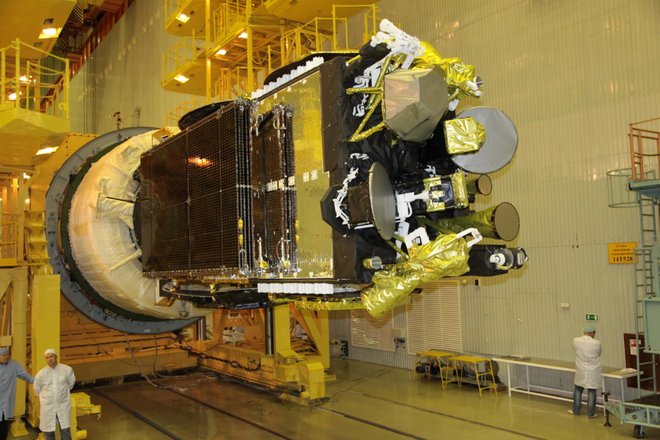Via Satellite: RSCC, Hughes Officials Detail Stressful Express-AM6 Recovery Mission
In March, Russian state satellite operator RSCC announced that it was disconnecting the Ka-band transponders on its Express-AM6 satellite due to degradation of the spacecraft. The satellite originally entered service in 2015.
RSCC employed the help of Hughes Network Systems in installing gateway equipment on the RSCC/Eutelsat AMU1 satellite so that it could start transitioning AM6 customers to new spacecraft. And, the partners worked under a brutally short deadline, which was cut even shorter by the (at the time) oncoming COVID-19 pandemic.
RSCC Deputy General of Development and Telecommunications System Operations Evgeny Buydinov joined Hughes Network Systems’ Regional Director of Russia & CIS Business Konstantin Lanin for a brief interview with Via Satellite to discuss how the two partners worked remotely to fix a satellite under extreme circumstances.
VIA SATELLITE: Why did the transfer of AM6 customers need to happen so quickly?
Buydinov: On March 25, 2020, RSCC completed the payload reconfiguration on Express-AM6 satellite at 53 degrees East orbital spot and Ka-band transponders were switched off. In this connection, RSCC was forced to organize urgent relocation of its Ka-band customers to other RSCC-owned satellites including Express-AMU1 at 36 degrees East and Express-AM5 at 140 degree East, where beams servicing the same territory were crossing with Express-AM6. RSCC was able to secure about 85% of its client base in Ka-band as a result of taking this action.
VIA SATELLITE: How did Hughes assist with this operation?
Lanin: It took four days for the Hughes engineering team to reconfigure the entire system from one satellite to another with a new frequency plan. The first collocated VSAT was commissioned on March 29. These efforts were possible because of Eutelsat Gateway, which operated Ka-band transponders on Express-AMU1 satellite, and Hughes Gateway, which was located at the same RSCC Space Communications Center in Dubna, 100 km (62 miles) north of Moscow. Highly skilled RSCC personnel on site were able to assist with the remote reconfiguration of the Hughes Jupiter gateway.
VIA SATELLITE: How was the transition and the aid different because of COVID-19 versus how it would have happened under normal circumstances?
Buydinov: All work on the transition of Hughes Jupiter gateway from Express-AM6 to Express-AMU1 was performed by specialists at RSCC Space Communications Center in Dubna, in close cooperation with Hughes engineers. RSCC specialists put a great deal of work into interconnecting Hughes equipment to another radio frequency terminal operating over the Express-AMU1 satellite. The Hughes engineering group completed the reconfiguration of the NMS Database for the new satellite as well as for the configuration of hardware and components to support two additional beams to expand the coverage territory. Hughes Jupiter NMS is unique in that it manages two separate networks — Jupiter GW in Dubna and Jupiter GW in Khabarovsk. The Express-AMU1 – Gilat Hub was already in operation. RSCC and Hughes specialists prevented all networks from experiencing a communication break or maintenance window.
RSCC, Hughes, and its distributors also worked closely together to successfully repoint thousands of terminals to a new satellite. We Hughes for all their efforts and hard work. Remotely repairing the satellite wouldn’t have been possible in any condition, let alone during COVID-19, without them working together.
VIA SATELLITE: Is remote troubleshooting satellites going to become more a commonly practice in a post COVID-19 world?
Lanin: Remote troubleshooting may make sense if you have a redundancy system operating on the satellite; however, if that system fails there’s not much you can do to fix the situation remotely.
By Jeffrey Hill, Rachel Jewett | May 27, 2020
https://www.satellitetoday.com/broadband/2020/05/27/rscc-hughes-officials-detail-stressful-express-am6-recovery-mission/
